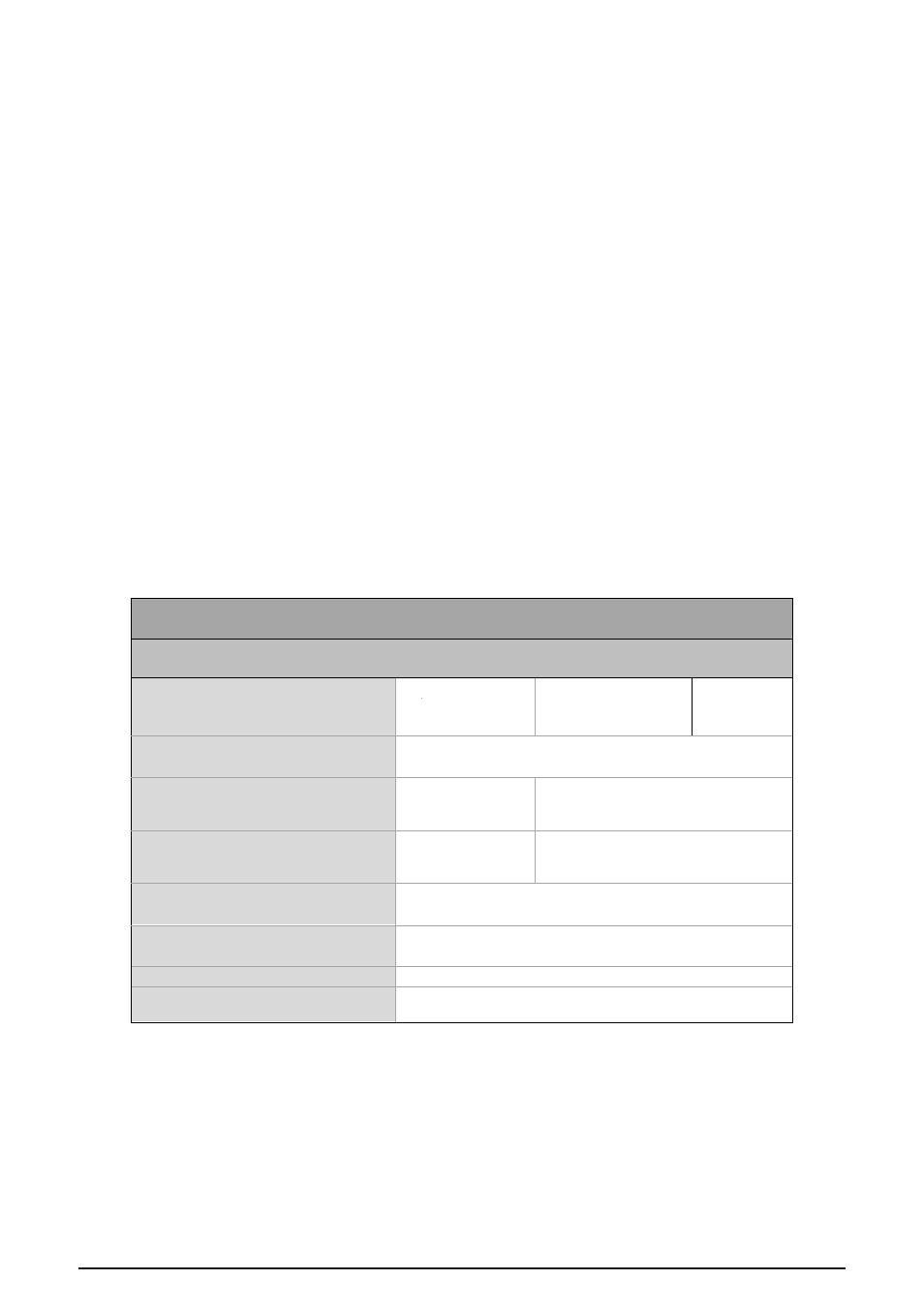MEDC BG User Manual
Page 6

T
The BG Break glass Unit is configured with either a single series Resistor (R1) or an R1 and end of line
resistor known as R2. No Current passes through R1 in either configuration until the glass has been broken
and the switch contacts have closed. Upon closure of the switch the current is then sent through R1 and hence
changes the resistive value in the circuit which triggers the alarm. The R2 resistor always has a current
flowing through which provides the reference resistive value for the circuit. The circuit can diagnose an open
circuit failure in R1 without having to trigger the system via a continuity check which is a form of diagnostics
for determining if an R1 resistor has failed Open Circuit. This form of diagnostics does however require a
proof test to be conducted in order to identify the failure and depending on the set up of the system the
defective Resistor may not be easily traceable if there are several BGI break glass Units in the system. The
end of line resistor R2 is used for the purpose of detecting an open or short circuit in the supply conductors.
The safety function of the Call Point is to raise the alarm when the Glass is Broken
Under No fault (Normal) Operating conditions the BG Break Glass Unit will raise the alarm upon operating
the switch via breaking the glass.
Under fault conditions the failure mode of the Break Glass is a failure to raise the alarm. For the failure rate
associated with this failure mode please refer to the table below.
Assessment of Functional Safety
The BG Call Point is intended for use in a safety system conforming to the requirements of IEC61508.
Sira Test & certification Ltd has conducted a Failure Modes Effect and Diagnostic Analysis (FMEDA) of the
BG Break Glass unit against the requirements of IEC61508-2 using a proof test interval of 8760hrs.
The Call Point is classed as a Type A device.
7
BGI BREAKGLASS UNIT
Safety Function of BG Break Glass Unit:
‘To raise the alarm upon breaking the glass’
Architectural constraints:
Type A
HFT=0
SFF= 97%
Proof Test Interval
=8760Hrs
MTTR = 8 Hrs
SIL3
Random hardware failures:
!
DD
= 0
!
DU
= 5.72E-07
!
SD
= 0
!
SU
= 2.04E-05
Probability of failure on demand:
PFD
AVG
=2.51E-03
(Low Demand
Mode)
SIL2
Probability of Dangerous failure on
safety function:
PFH = 5.72E-07
(High Demand
Mode)
SIL2
Hardware safety integrity
compliance
[1]
Route 1
H
Systematic safety integrity
compliance
Route 1
S
Systematic Capability
SC2
Overall SIL-capability achieved
SIL 2 (Low Demand)
SIL 2 (High Demand)
a
r
t
s
n
o
c
l
a
r
u
t
c
e
ti
h
c
Ar
F
N
U
S
S
A
L
G
K
A
E
R
B
I
BG
G
k
a
e
r
B
G
B
f
o
n
o
it
c
n
u
F
y
p
tty
e
f
Sa
i
k
a
e
rre
b
n
o
p
uup
m
r
a
lla
a
e
h
tth
e
s
is
a
rra
o
‘TTo
:
s
t
n
i
a
A
e
p
Ty
0
=
T
HF
T
I
N
g
:t
i
n
U
s
s
a
l
G
’
s
s
a
lla
g
g e
h
tth
g
n
iin
l
a
v
r
e
t
n
I
st
e
T
f
o
o
Pr
s
r
H
60
=87
3
L
SI
a
r
t
s
n
o
c
l
a
r
u
t
c
e
ti
h
c
Ar
e
r
a
w
d
r
a
h
m
o
d
n
Ra
y
e
r
u
li
a
f
f
o
y
tty
il
i
b
a
b
o
Pr
g
n
a
D
f
o
y
y
tty
il
i
b
a
b
o
Pr
:
n
o
it
c
n
u
f
y
tty
e
f
sa
fe
a
s
e
r
a
w
d
r
Ha
t
n
i
ty
ce
n
a
il
p
m
co
]
[1
n
i
y
tty
e
f
a
s
c
it
a
m
e
t
s
Sy
ce
n
a
il
p
m
co
:
s
t
n
i
a
0
=
T
HFF
%
7
9
=
F
SF
:
s
e
r
u
il
a
f
!
DD
= 0
!
DU
E
= 5.72 -07
:
d
n
a
m
e
d
n
o
e
D
PF
G
AV
1E
.5
=2
-03
d
n
a
m
e
D
w
o
(L
)
e
d
Mo
n
o
e
r
u
li
a
f
s
u
o
r
e
E
2
7
.
5
=
H
PF
-07
d
n
a
m
e
D
h
g
d
i
(H
)
e
d
g
Mo
ty
i
r
g
te
y
tty
i
r
g
e
t
s
r
H
60
=87
s
r
H
8
=
R
T
MT
!
SD
= 0
!
SU
E
4
= 2.0 -05
2
L
SI
2
L
SI
1
e
t
u
Ro
H
1
e
t
u
Ro
S
ce
n
a
il
p
m
co
p
il
i
b
a
p
y
a
C
c
it
a
m
e
t
s
Sy
p
L
I
S
ll
a
r
e
Ov
-
il
i
b
a
p
ca
yy
tty
i
y
d
e
v
e
i
h
c
a
y
tty
i
2
SC
)
d
n
a
m
e
D
w
o
L
(
2
L
SI
)
d
n
a
m
e
D
h
g
i
H
(
2
L
SI
05/13
© Cooper MEDC 2013
